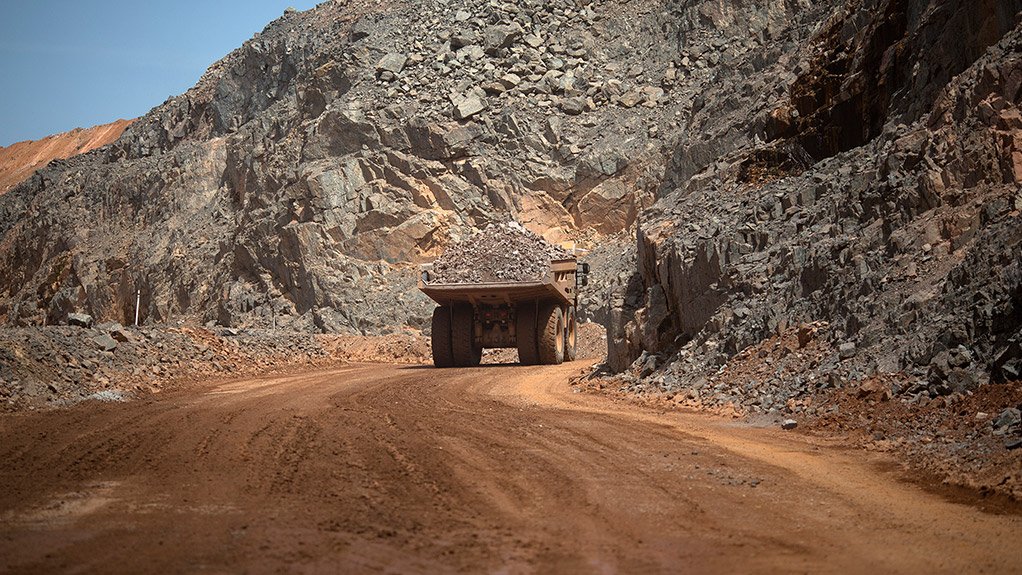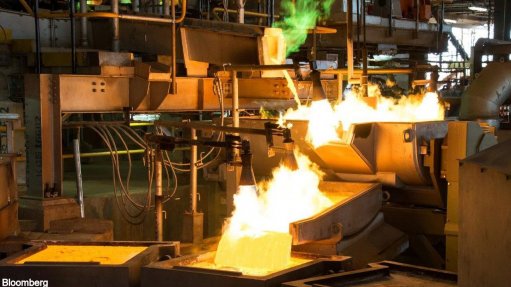Commodity prices impact on mineral rents



CLAUDE BAISSAC It is better to leave minerals unexploited than to dig them out with zero benefits for anyone
Photo by Pimani Baloyi
MINING IN AFRICA Investing in Africa is not a short-term game
Mining companies operating in Africa need to understand that fluctuating commodity prices impact on mineral rents, says mining risk analysis company Eunomix MD Claude Baissac.
Baissac was the guest speaker at an event hosted last month by Africa mining relationship facilitator the African Mining Network, in Ilovo, Johannesburg, where he delivered a presentation titled 'The long cycle of prices, resource rents and policy in Africa: implications for mining investment'.
The presentation was based on the analysis of gross domestic product (GDP) data from the World Bank comprising economic statistics of 48 sub-Saharan Africa mining countries from 1970 to 2010.
“In terms of what drives . . . the formation of mineral rents, from a purely economic standpoint, prices have a direct impact on mineral rents. When you have high ore prices, those prices almost immediately manifest in higher mineral rents in the economy and that rent, in turn. . . impacts on growth.
“However, this does not necessarily mean that when prices are high – and mineral rents are subsequently high – that growth will also be high. All it means is that there is a positive correlation between mineral rents and prices, which sometimes lead to growth,” said Baissac.
He based his argument on the World Bank’s definition of mineral rents – the difference between the value of production for a stock of minerals at world prices and their total cost of production. Minerals included in the calculation are tin, gold, lead, zinc, iron, copper, nickel, silver, bauxite and phosphate.
He added that, during the forty years included in the study, there were periods during which the correlation between the value of production and the total cost of production was strong, and periods during which it was weak.
Citing Zambia as a case study, Baissac stated that a misunderstanding of this correlation, as well as poor mining policy, could cause the mining industry to contribute little to the economy. The total mineral rent in Zambia from 1970 to 2010 was $15-billion, owing to a period during which the sector contributed zero mineral rents.
Meanwhile, Baissac conducted a study which revealed that the country’s mining industry could have contributed $60-billion in mineral rents during that period, assuming that Zambia’s net production remained at 700 000 t/y from 1970 to 2010.
“Under this assumption, Zambia’s minerals policy cost the country $45-billion in lost rent. . . because, during that period, the rent was very high and prices were very low. At first, prices remained constant while the rent collapsed, and then it went up and down again several times. . . in the 1970s and 80s.
“In the late 1990s, the mineral rent out of Zambia was zero, which meant that the country was producing minerals out of the soil at zero net value to society. They were wasting scarce resources,” Baissac elaborated.
He mentioned that Zambia nationalised its copper mining industry during an industry boom in the late 1960s, adding that this led to a collapse in production and that the mining companies operating in the country at the time became less efficient.
However, owing to a policy change in 2000 – when the country privatised the copper mining sector – Zambia’s contribution to mineral rents increased exponentially, he highlighted.
Citing South Africa as another case study, Baissac highlighted that the country presented opposite results during the same period. In 1980, South Africa represented a quarter of Africa’s mineral rents, with its share growing to 89% at the time.
“South Africa became Africa’s mining giant in the 1970s, owing to supportive and exploitative policies. The rent exploded from about $760-million in 1970 to more than $3-billion in 1975. It peaked at more than $12-billion in 1980 – from a mere 1% of GDP in 1970 to an impressive 13.3%,” he explained.
However, the declining gold price, political uncertainty and policy changes led to a continuous fall of South Africa’s minerals rent in the 1980s and 1990s to $1.6-billion and to 1.2% of GDP. The country was still Africa’s mining giant, but its rent at the time represented only 67% of the region during that period.
“In the 2000s, the rent exploded to nearly $7-billion in 2005 and to more than $16.5-billion in 2010 at about 9% of GDP, but the country’s share in Africa continued to decline and reached 65% that year.”
Baissac concluded by stating that Africa’s mining industry and its funders needed to “significantly deepen their understanding of the fundamentals of the interface between geology, economics and politics” as “investing in Africa is not a short-term game”.
About the African Mining Network
The African Mining Network was established 5 years ago to develop and build relationships across Africa's mining community.
The network hosts events in Johannesburg, South Africa, every second month.
The aim of these events is to provide a platform for people to network and listen to an informative and engaging speaker who will discuss current topics and issues.
The African Mining Network also publishes a weekly news service highlighting mining project news across the African continent, which is distributed to its 23 000 members.
Comments
Press Office
Announcements
What's On
Subscribe to improve your user experience...
Option 1 (equivalent of R125 a month):
Receive a weekly copy of Creamer Media's Engineering News & Mining Weekly magazine
(print copy for those in South Africa and e-magazine for those outside of South Africa)
Receive daily email newsletters
Access to full search results
Access archive of magazine back copies
Access to Projects in Progress
Access to ONE Research Report of your choice in PDF format
Option 2 (equivalent of R375 a month):
All benefits from Option 1
PLUS
Access to Creamer Media's Research Channel Africa for ALL Research Reports, in PDF format, on various industrial and mining sectors
including Electricity; Water; Energy Transition; Hydrogen; Roads, Rail and Ports; Coal; Gold; Platinum; Battery Metals; etc.
Already a subscriber?
Forgotten your password?
Receive weekly copy of Creamer Media's Engineering News & Mining Weekly magazine (print copy for those in South Africa and e-magazine for those outside of South Africa)
➕
Recieve daily email newsletters
➕
Access to full search results
➕
Access archive of magazine back copies
➕
Access to Projects in Progress
➕
Access to ONE Research Report of your choice in PDF format
RESEARCH CHANNEL AFRICA
R4500 (equivalent of R375 a month)
SUBSCRIBEAll benefits from Option 1
➕
Access to Creamer Media's Research Channel Africa for ALL Research Reports on various industrial and mining sectors, in PDF format, including on:
Electricity
➕
Water
➕
Energy Transition
➕
Hydrogen
➕
Roads, Rail and Ports
➕
Coal
➕
Gold
➕
Platinum
➕
Battery Metals
➕
etc.
Receive all benefits from Option 1 or Option 2 delivered to numerous people at your company
➕
Multiple User names and Passwords for simultaneous log-ins
➕
Intranet integration access to all in your organisation




















